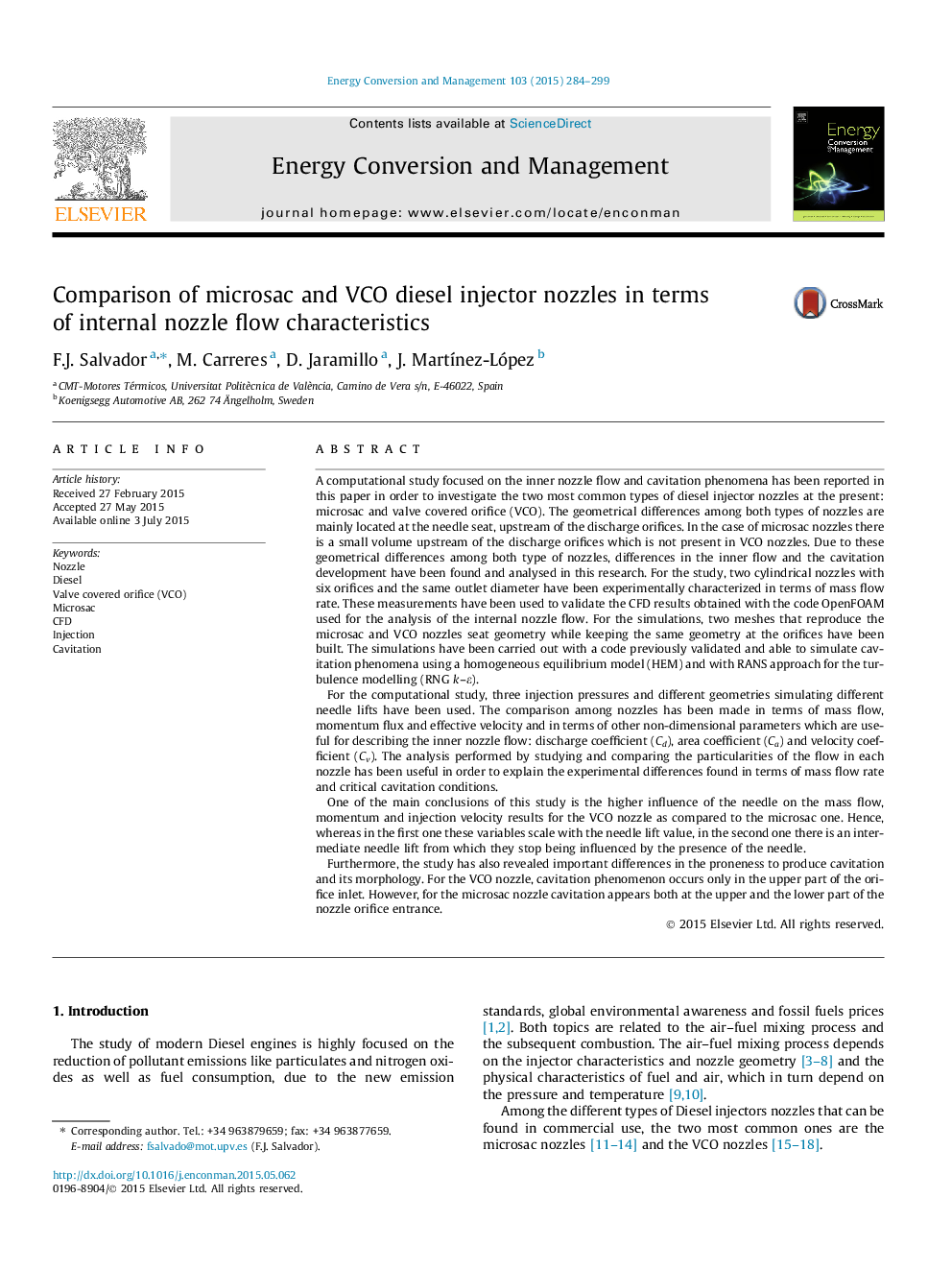| کد مقاله | کد نشریه | سال انتشار | مقاله انگلیسی | نسخه تمام متن |
|---|---|---|---|---|
| 771733 | 1462859 | 2015 | 16 صفحه PDF | دانلود رایگان |

• Two common types of diesel injector nozzles (VCO and microsac) are compared.
• A CFD code with a HEM model for two-phase flow and a RANS approach is used.
• Simulations are performed in stationary conditions at several needle lifts.
• Differences in cavitation inception and morphology are analysed.
• VCO nozzles are more prone to cavitate and more affected by the needle presence.
A computational study focused on the inner nozzle flow and cavitation phenomena has been reported in this paper in order to investigate the two most common types of diesel injector nozzles at the present: microsac and valve covered orifice (VCO). The geometrical differences among both types of nozzles are mainly located at the needle seat, upstream of the discharge orifices. In the case of microsac nozzles there is a small volume upstream of the discharge orifices which is not present in VCO nozzles. Due to these geometrical differences among both type of nozzles, differences in the inner flow and the cavitation development have been found and analysed in this research. For the study, two cylindrical nozzles with six orifices and the same outlet diameter have been experimentally characterized in terms of mass flow rate. These measurements have been used to validate the CFD results obtained with the code OpenFOAM used for the analysis of the internal nozzle flow. For the simulations, two meshes that reproduce the microsac and VCO nozzles seat geometry while keeping the same geometry at the orifices have been built. The simulations have been carried out with a code previously validated and able to simulate cavitation phenomena using a homogeneous equilibrium model (HEM) and with RANS approach for the turbulence modelling (RNG k–ε).For the computational study, three injection pressures and different geometries simulating different needle lifts have been used. The comparison among nozzles has been made in terms of mass flow, momentum flux and effective velocity and in terms of other non-dimensional parameters which are useful for describing the inner nozzle flow: discharge coefficient (Cd), area coefficient (Ca) and velocity coefficient (Cv). The analysis performed by studying and comparing the particularities of the flow in each nozzle has been useful in order to explain the experimental differences found in terms of mass flow rate and critical cavitation conditions.One of the main conclusions of this study is the higher influence of the needle on the mass flow, momentum and injection velocity results for the VCO nozzle as compared to the microsac one. Hence, whereas in the first one these variables scale with the needle lift value, in the second one there is an intermediate needle lift from which they stop being influenced by the presence of the needle.Furthermore, the study has also revealed important differences in the proneness to produce cavitation and its morphology. For the VCO nozzle, cavitation phenomenon occurs only in the upper part of the orifice inlet. However, for the microsac nozzle cavitation appears both at the upper and the lower part of the nozzle orifice entrance.
Journal: Energy Conversion and Management - Volume 103, October 2015, Pages 284–299